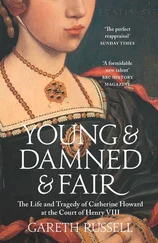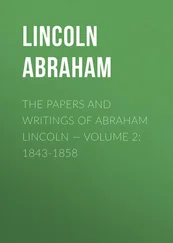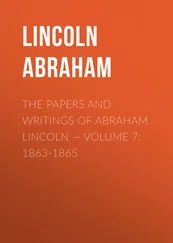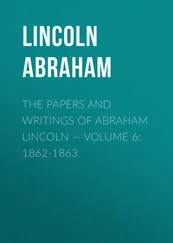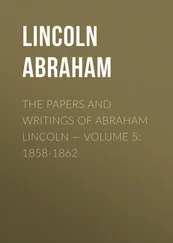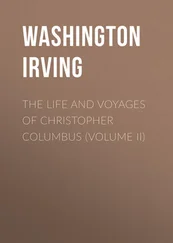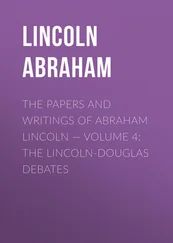Henry Fuseli - The Life and Writings of Henry Fuseli, Volume 2 (of 3)
Здесь есть возможность читать онлайн «Henry Fuseli - The Life and Writings of Henry Fuseli, Volume 2 (of 3)» — ознакомительный отрывок электронной книги совершенно бесплатно, а после прочтения отрывка купить полную версию. В некоторых случаях можно слушать аудио, скачать через торрент в формате fb2 и присутствует краткое содержание. Жанр: visual_arts, foreign_antique, foreign_prose, на английском языке. Описание произведения, (предисловие) а так же отзывы посетителей доступны на портале библиотеки ЛибКат.
- Название:The Life and Writings of Henry Fuseli, Volume 2 (of 3)
- Автор:
- Жанр:
- Год:неизвестен
- ISBN:нет данных
- Рейтинг книги:5 / 5. Голосов: 1
-
Избранное:Добавить в избранное
- Отзывы:
-
Ваша оценка:
- 100
- 1
- 2
- 3
- 4
- 5
The Life and Writings of Henry Fuseli, Volume 2 (of 3): краткое содержание, описание и аннотация
Предлагаем к чтению аннотацию, описание, краткое содержание или предисловие (зависит от того, что написал сам автор книги «The Life and Writings of Henry Fuseli, Volume 2 (of 3)»). Если вы не нашли необходимую информацию о книге — напишите в комментариях, мы постараемся отыскать её.
The Life and Writings of Henry Fuseli, Volume 2 (of 3) — читать онлайн ознакомительный отрывок
Ниже представлен текст книги, разбитый по страницам. Система сохранения места последней прочитанной страницы, позволяет с удобством читать онлайн бесплатно книгу «The Life and Writings of Henry Fuseli, Volume 2 (of 3)», без необходимости каждый раз заново искать на чём Вы остановились. Поставьте закладку, и сможете в любой момент перейти на страницу, на которой закончили чтение.
Интервал:
Закладка:
Great as these advantages were, it is not to be supposed that Nature deviated from her gradual progress in the developement of human faculties, in favour of the Greeks. Greek Art had her infancy, but the Graces rocked the cradle, and Love taught her to speak. If ever legend deserved our belief, the amorous tale of the Corinthian maid, who traced the shade of her departing lover by the secret lamp, appeals to our sympathy, to grant it; and leads us at the same time to some observations on the first mechanical essays of Painting, and that linear method which, though passed nearly unnoticed by Winkelmann , seems to have continued as the basis of execution, even when the instrument for which it was chiefly adapted had long been laid aside.
The etymology of the word used by the Greeks to express Painting being the same with that which they employ for Writing , makes the similarity of tool, materials, method, almost certain. The tool was a style or pen of wood or metal; the materials a board, or a levigated plane of wood, metal, stone, or some prepared compound; the method, letters or lines.
The first essays of the art were Skiagrams , simple outlines of a shade, similar to those which have been introduced to vulgar use by the students and parasites of Physiognomy, under the name of Silhouettes; without any other addition of character or feature but what the profile of the object, thus delineated could afford.
The next step of the art was the Monogram , outlines of figures without light or shade, but with some addition of the parts within the outline, and from that to the Monochrom , or paintings of a single colour on a plane or tablet, primed with white, and then covered with what they called punic wax, first amalgamated with a tough resinous pigment, generally of a red, sometimes dark brown, or black colour. In , or rather through this thin inky ground, the outlines were traced with a firm but pliant style, which they called Cestrum ; if the traced line happened to be incorrect or wrong, it was gently effaced with the finger or with a sponge, and easily replaced by a fresh one. When the whole design was settled, and no farther alteration intended, it was suffered to dry, was covered, to make it permanent, with a brown encaustic varnish, the lights were worked over again, and rendered more brilliant with a point still more delicate, according to the gradual advance from mere outlines to some indications, and at last to masses of light and shade, and from those to the superinduction of different colours, or the invention of the Polychrom , which by the addition of the pencil to the style, raised the mezzotinto or stained drawing to a legitimate picture, and at length produced that vaunted harmony , the magic scale of Grecian colour. 5 5 This account is founded on the conjectures of Mr. Riem , in his Treatise on die Malerey der Alten , or the Painting of the Ancients , 4to. Berlin, 1787
If this conjecture, for it is not more, on the process of linear painting, formed on the evidence and comparison of passages always unconnected, and frequently contradictory, be founded in fact, the rapturous astonishment at the supposed momentaneous production of the Herculanean dancers and the figures on the earthern vases of the ancients, will cease; or rather, we shall no longer suffer ourselves to be deluded by palpable impossibility of execution: on a ground of levigated lime or on potters ware, no velocity or certainty attainable by human hands can conduct a full pencil with that degree of evenness equal from beginning to end with which we see those figures executed, or if it could, would ever be able to fix the line on the glassy surface without its flowing: to make the appearances we see, possible, we must have recourse to the linear process that has been described, and transfer our admiration, to the perseverance, the correctness of principle, the elegance of taste that conducted the artist's hand, without presuming to arm it with contradictory powers: the figures he drew and we admire, are not the magic produce of a winged pencil, they are the result of gradual improvement, exquisitely finished monochroms .
How long the pencil continued only to assist, when it began to engross and when it at last entirely supplanted the cestrum, cannot in the perplexity of accidental report be ascertained. Apollodorus in the 93d Olymp. and Zeuxis in the 94th, are said to have used it with freedom and with power. The battle of the Lapithæ and the Centaurs, which according to Pausanias, Parrhasius painted on the shield of the Minerva of Phidias, to be chased by Mys, could be nothing but a monochrom, and was probably designed with the cestrum, as an instrument of greater accuracy. 6 6 Pausanias Attic. c. xxviii. The word used by Pausanias καταγραψαι, shows that the figures of Parrhasius were intended for a Bassorelievo. They were in profile. This is the sense of the word Catagrapha in Pliny, xxxv. c. 8, he translates it "obliquas imagines."
Apelles and Protogenes, nearly a century afterwards, drew their contested lines with the pencil; and that alone, as delicacy and evanescent subtlety were the characteristic of those lines, may give an idea of their mechanic excellence. And yet in their time the diagraphic process, 7 7 By the authority chiefly of Pamphilus the master of Apelles, who taught at Sicyon. 'Hujus auctoritate,' says Pliny, xxxv. 10, 'effectum est Sicyone primum, deinde et in tota Græcia, ut pueri ingenui ante omnia diagraphicen , hoc est, picturam in buxo, docerentur,' &c. Harduin , contrary to the common editions, reads indeed, and by the authority, he says, of all the MSS. graphicen , which he translates: ars 'delineandi,' desseigner, but he has not proved that graphice means not more than design; and if he had, what was it that Pamphilus taught? he was not the inventor of what he had been taught himself. He established or rather renewed a particular method of drawing, which contained the rudiments, and facilitated the method of painting.
which is the very same with the linear one we have described, made a part of liberal education. And Pausias of Sicyon, the contemporary of Apelles, and perhaps the greatest master of composition amongst the ancients, when employed to repair the decayed pictures of Polygnotus at Thespiæ, was adjudged by general opinion to have egregiously failed in the attempt, because he had substituted the pencil to the cestrum, and entered a contest of superiority with weapons not his own.
Here it might seem in its place to say something on the Encaustic method used by the ancients; were it not a subject by ambiguity of expression and conjectural dispute so involved in obscurity that a true account of its process must be despaired of: the most probable idea we can form of it is, that it bore some resemblance to our oil-painting, and that the name was adopted to denote the use of materials, inflammable or prepared by fire, the supposed durability of which, whether applied hot or cold, authorised the terms ἐνεκαυσε and inussit .
The first great name of that epoch of the preparatory period when facts appear to overbalance conjecture, is that of Polygnotus of Thasos, who painted the poecile at Athens, and the lesche or public hall at Delphi. Of these works, but chiefly of the two large pictures at Delphi, which represented scenes subsequent to the eversion of Troy, and Ulysses consulting the spirit of Tiresias in Hades, Pausanias 8 8 Pausan. Phocica, c. xxv. seq.
gives a minute and circumstantial detail; by which we are led to surmise, that what is now called composition was totally wanting in them as a whole: for he begins his description at one end of the picture, and finishes it at the opposite extremity, a senseless method if we suppose that a central group, or a principal figure to which the rest were in a certain degree subordinate, attracted the eye; it appears as plain that they had no perspective, the series of figures on the second or middle ground being described as placed above those on the foreground, and the figures in the distance above the whole: the honest method too which the painter chose of annexing to many of his figures, their names in writing, savours much of the infancy of painting. – We should however be cautious to impute solely to ignorance or imbecility, what might rest on the firm base of permanent principle. The genius of Polygnotus was more than that of any other artist before or after, Phidias perhaps alone excepted, a public genius, his works monumental works, and these very pictures the votive offerings of the Gnidians. The art at that summit, when exerting its powers to record the feats, consecrate the acts, perpetuate the rites, propagate the religion, or to disseminate the peculiar doctrines of a nation, heedless of the rules prescribed to inferior excellence and humbler pursuits, returns to its elements, leaps strict possibility, combines remote causes with present effects, connects local distance and unites separate moments. – Simplicity, parallelism, apposition, take place of variety, contrast, and composition. – Such was the Lesche painted by Polygnotus; and if we consider the variety of powers that distinguished many of the parts, we must incline to ascribe the primitive arrangement of the whole rather to the artist's choice and lofty simplicity, than want of comprehension: nature had endowed him with that rectitude of taste which in the individuum discovers the stamen of the genus, hence his style of design was essential with glimpses of grandeur 9 9 This I take to be the sense of Μεγεθος here, which distinguished him, according to Ælian, Var. Hist. iv. 3, from Dionysius of Colophon. The word Τελειοις in the same passage: και ἐν τοις τελειοις εἰργαζετο τα ἀθλα, I translate: he aimed at, he sought his praise in the representation of essential proportion ; which leads to ideal beauty. The κρειττους, χειρους, ὁμοιους; or the βελτιονας ἠ καθ' ἡμας, ἠ και τοιουτους, ἠ χειρονας, of Aristotle, Poetic. c. 2, by which he distinguishes Polygnotus, Dionysius, Pauson, confirms the sense given to the passage of Ælian.
and ideal beauty. Polygnotus, says Aristotle, improves the model. His invention reached the conception of undescribed being, in the dæmon Eurynomus; filled the chasm of description in Theseus and Pirithous, in Ariadne and Phædra; and improved its terrors in the spectre of Tityus; whilst colour to assist it, became in his hand an organ of expression; such was the prophetic glow which still crimsoned the cheeks of his Cassandra in the time of Lucian. 10 10 Παρειῶν το ἐνερευθες, ὁιαν την Κασσανδραν ἐν τη λεσχη ἐποιησε τοις Δελφοις. Lucian: εἰκονες. This, and what Pausanias tells of the colour of Eurynomus in the same picture, together with the coloured draperies mentioned by Pliny; makes it evident, that the 'simplex color' ascribed by Quintilian to Polygnotus and Aglaophon, implies less a single colour, as some have supposed, than that simplicity always attendant on the infancy of painting, which leaves every colour unmixed and crudely by itself. Indeed the Poecile (ἡ ποικιλη στοα) which obtained its name from his pictures, is alone a sufficient proof of variety of colours.
The improvements in painting which Pliny ascribes to him, of having dressed the heads of his females in variegated veils and bandeaus , and robed them in lucid drapery, of having gently opened the lips, given a glimpse of the teeth, and lessened the former monotony of face, such improvements, I say, were surely the most trifling part of a power to which the age of Apelles and that of Quintilian paid equal homage: nor can it add much to our esteem for him, to be told by Pliny that there existed, in the portico of Pompey, a picture of his with the figure of a warrior in an attitude so ambiguous as to make it a question whether he were ascending or descending. Such a figure could only be the offspring of mental or technic imbecility, even if it resembled the celebrated one of a Diomede carrying off the palladium with one and holding a sword in the other hand, on the intaglio inscribed, I think, with the name of Dioscorides.
Интервал:
Закладка:
Похожие книги на «The Life and Writings of Henry Fuseli, Volume 2 (of 3)»
Представляем Вашему вниманию похожие книги на «The Life and Writings of Henry Fuseli, Volume 2 (of 3)» списком для выбора. Мы отобрали схожую по названию и смыслу литературу в надежде предоставить читателям больше вариантов отыскать новые, интересные, ещё непрочитанные произведения.
Обсуждение, отзывы о книге «The Life and Writings of Henry Fuseli, Volume 2 (of 3)» и просто собственные мнения читателей. Оставьте ваши комментарии, напишите, что Вы думаете о произведении, его смысле или главных героях. Укажите что конкретно понравилось, а что нет, и почему Вы так считаете.



